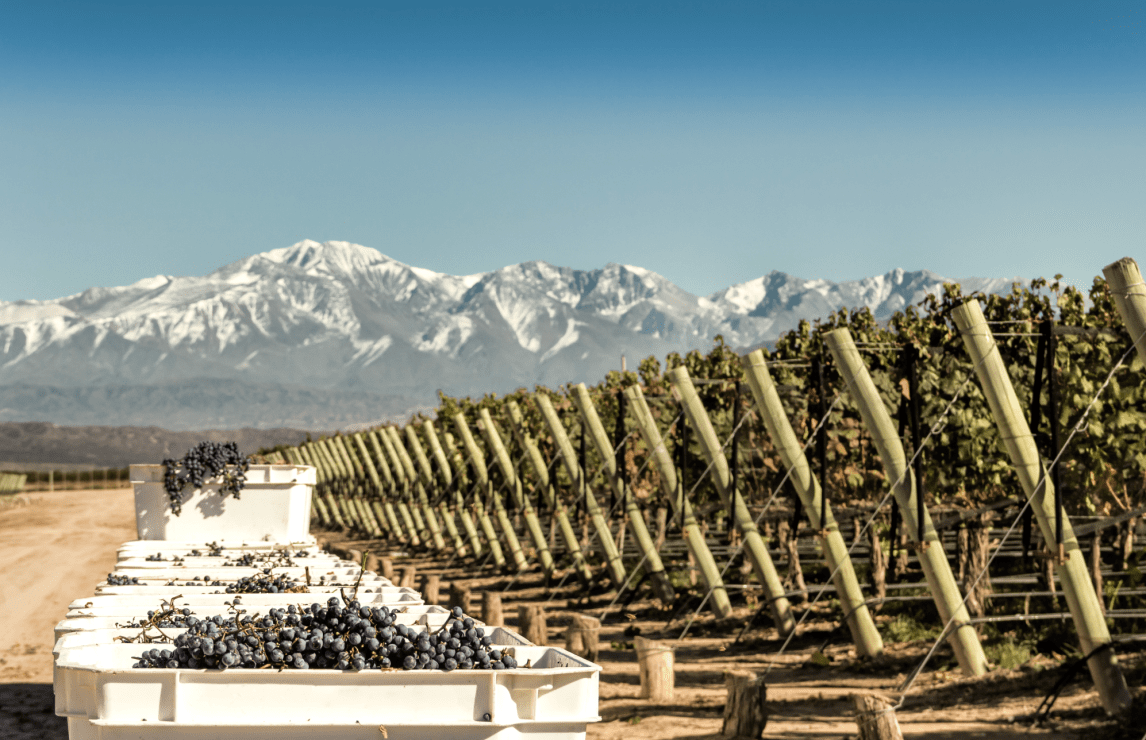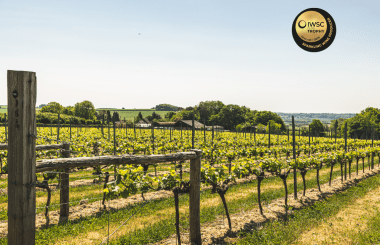From Old-School To Cool: the evolution of Argentinian Malbec and the future of Argentinian wines
Argentina means Malbec and Malbec means Argentina – at least, this is how an average consumer perceives the country’s wine industry. Indeed, Malbec is Argentina’s most cultivated grape with over 45,000 hectares of vineyards and nearly 130 mln litres of wine exported each year. However, the modern face of Argentinian Malbec is rather different from what it was 10 years ago – as noted by our international judges who have recently traveled to Mendoza for our in-situ judging, organised in partnership with Wines of Argentina. We gathered our experts, Beth Pearce MW, Rebecca Palmer, David Kermode, Matteo Montone MS, as well as head judge, Dirceu Vianna ‘Junior’ MW - to hear their insights on the present and the future of Argentinian wines.
Wines with an Andean freshness
The recent changes in the country’s wine industry have been momentous, according to our judges who were impressed with the consistency of all entries. “This competition has very high standards so for producers to earn a silver medal – it’s a very high achievement. And the number of silver medals that judges gave was very high – so Argentina is doing a great job,” said Junior. This year, over 400 medals have been awarded to Argentinian wines judged both in Mendoza and in the UK. The medal count includes 11 golds, over 150 silvers and more than 270 bronze awards.
“I found that many more wines had a greater balance and a sense of freshness than in the past,” says Rebecca Palmer who has been involved in buying Argentinian wines for over 20 years. “ I was really impressed by the diversity of wines from different areas.”
Diversity is one word that describes Argentinian terroirs: from the sunny, arid mountainous regions in the north, to the humid coast of the Atlantic in the east and the cool, windy plains of Patagonia in the south. However, it is mainly the Andes mountain range that shapes the face of modern Argentinian winemaking. With half of all vineyards planted at the foothills and on the slopes of the Andes, high altitudes have become the hallmark and the driving force of the new style of the country’s wine – fresher, more elegant, with a greater sense of place.
Argentinian Malbec: the taste of terroir
It is no wonder that at the recent IWSC in-situ judging, “the most awarded wines were the ones where the vineyards were planted at higher altitudes. These wines showed the vibrancy of fruit and great freshness,” explained judge Matteo Montone MS.
This certainly applies to Argentinian Malbec, with our judges admiring the freshness of wines coming from high-altitude sites. According to our experts, more and more Argentinian winemakers cherish the terroir allowing the unique features of their plots to really shine through the wine. “Malbec is such a unique variety that offers density, concentration and power, but also some freshness. There are not many other varieties that can do it. What we tasted during these days is not what Malbec was 10 years ago. People are moving away from super-rich oaky wines to more fresh and refined styles,” noted Matteo.
That said, there is still a place for traditional styles of Argentinian Malbec, so loved by consumers across the world. “There’s the old-school Malbec – a bit oaked with good ripeness, and I think producers are doing a better job not overoaking it, but it’s still a traditional style. But in general, there is a move towards freshness and I think it’s a good thing. However, it’s important that both styles co-exist,” said Dirceu Vianna Junior MW.
The judges appreciated a great variety of styles of Argentinian Malbec among the entries. “We awarded medals to a range of styles of Malbec, from soft fruit-forward to more traditional, layered, and spicy styles. It was really interesting to see that whole spectrum,” said judge Beth Pearce MW.
From Cabernet Franc to Bonarda
While Malbec certainly is the flagship grape of Argentina, the country can offer so much more than just one variety, our judges emphasised. “I really enjoyed tasting Cabernet Franc,” said Beth Pearce MW. “I think it works really well in combination with Malbec. Some of the blends we had were fantastic. I can see that developing in the future,” Beth added. Moreover, our experts think that Cabernet Franc can compete with Malbec in terms of the quality of wines. “Cabernet Franc was outstanding! And if Argentina could do with Cabernet Franc what it has done with Malbec – then there’s no stopping it really,” said Rebecca Palmer.
One thing that our judges pointed out was the early release of some Cabernet Franc wines – which does not help to build a following among the consumers, even if the wines are of exceptional quality. “The wines are absolutely delicious but slightly too firm. Should you hold on to that wine and release it a slightly bit later when it will give consumers more pleasure? Perhaps it’s one thing to consider,” said head judge Dirceu Vianna Junior MW.
Among other red varieties that performed well was Garnacha, with judges admiring its delicacy and charm, as well as the often overlooked Bonarda. “I think people often don’t value Bonarda too much, but I tasted fantastic wines,” shared Junior. “You have to take good care of it in the vineyard and in the winery. You have to value it and it will pay you back.” David Kermode expressed a similar sentiment: “Bonarda is a Cinderella grape to a certain extent because actually, it should go to the ball, it deserves it, it is friendly, approachable, juicy, fun.”
Argentinian white wines: competing with Burgundy
It is not just the red wines that have a bright future in Argentina. Our judges spoke highly of the quality of Argentinian Chardonnay which, according to them, can compete with white Burgundy. “There is a huge opportunity now when the Burgundy category has shifted so much in terms of price point – and the quality of the best wines we tasted here today was really outstanding,” said Rebecca Palmer. “These wines have the gravitas that certain key regions of the world producing Chardonnay don’t quite have – sort of polish and self-assurance, without being overblowing – and I really enjoyed that.” However, the judges reiterated, it is crucial for the producers to pick the grapes at the right time, not leaving it too late, to retain acidity and the optimal level of ripeness.
Additionally, the judges praised several high-quality examples of Torrontés, Argentina’s signature white grape, as well as some well-rounded and balanced Chardonnay-Torrontés blends.
Interestingly, the judges felt that, while there will always be a place for single-varietal wines, especially Argentinian Malbec, the future of the country’s winemaking lies in blends. “I think if we come back here in 3, 5 or 10 years – the best wines of Argentina won’t be Malbecs, they will be Malbec-dominated blends. There’s a future for Malbec obviously, but the best wines will be blends,” said Junior. On the same subject, Rebecca Palmer shared: “I did have a moment of lucidity these days, being in Mendoza, tasting all of these wines and seeing a glimpse of perfect focus in these Malbec-Cabernet Franc blends. Single-variety Malbecs seem to be merging right now and are already mind-blowing, but the sense of completeness of these blends is just stunning!”
The market position of Argentinian wines
Speaking of the position of Argentinian wines on the international markets, the judges noted that in recent years the country has done a great job taking a share of the premium wine segment. The perception of Argentinian wines is evolving, said Rebecca Palmer: “The country as a whole has really managed to retain a real sense of premium by comparison with some other wine regions, and I would really encourage the producers to go in the same direction. I think, perhaps, growers can think of a more parcellaire approach – making more of their terroir, the way notably the French have in Burgundy for example, or in Bordeaux – and really focusing on finding that unique point of difference.”
The judges emphasised that, this parcellaire approach needs to go hand-in-hand with educating the consumers on the differences between Argentinian regions and terroirs. However, if the producers focus on the sense of place in their wines, the wine trade will be prepared to give them a hand in educating the consumers, said the judges. “I would advise to really major on a sense of place, to really own individual regions – and they are so different here, there’s such diversity! Also, really understand that sense of specificity so that we can really start presenting Argentina in the educational sense as a place that has so much diversity and potential for different consumers,” said Rebecca Palmer.
Best Argentinian Wines 2023






